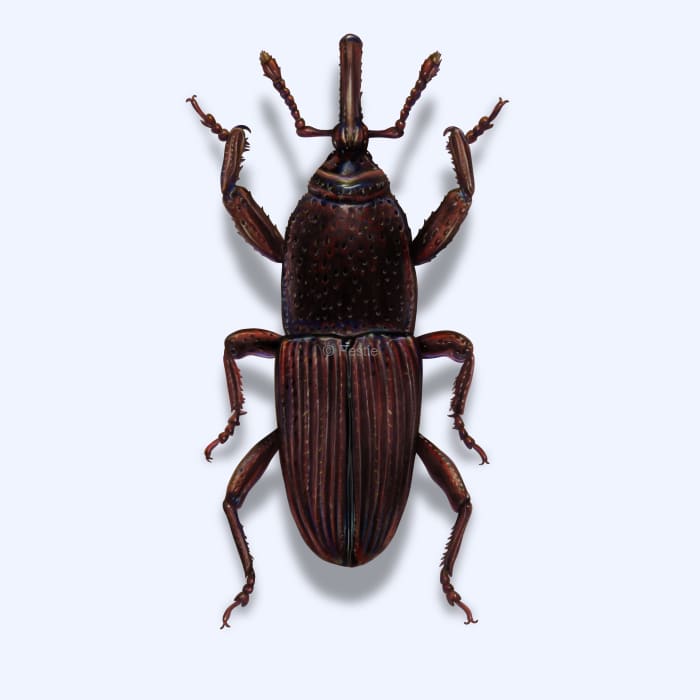How to identify and treat wheat weevils

"See no weevil, hear no weevil, speak no weevil"
Have you ever opened up a box of cereal, a bag of flour, or a jar of wheat and found an unexpected guest? Those little nibblers with their adorable snouts can be a lot of trouble. The truth is, they've been with us for millennia, sneaking into our grains and robbing us of our hard work. But how does this small weevil get around without the ability to fly or crawl very far?
That's our fault. Since the Stone Age, we've been trading, selling, and buying wheat, rice, corn, and oats, passing along this pest.
Wheat weevils, or granary weevils, love to munch on grains and can make quite a mess of your stored food. Understanding the granary weevil's life cycle and behaviors not only helps in identifying an infestation but also in effectively managing it, ensuring that your pantry remains free from these unwelcome guests.
How to identify wheat weevils
Granary weevils are small dark beetles, best identified by their prominent snout, which makes them easy to distinguish from other pantry pests. They are usually dark brown to black and cannot fly due to their lack of wings.
Identifying a granary weevil infestation typically involves spotting the adult weevils in grain products or noticing the damage they cause, such as holes in grains where the females have laid their eggs. Homeowners might also find flour or meal products appearing clumped together, as larvae and adults feed within.
How big are wheat weevils?
Adults are typically 1/8 to 1/4 inch long.
What other pest looks like a wheat weevil?
Wheat weevils are often confused with rice weevils; however, rice weevils can fly.
Where do wheat weevils live?
Granary weevils are found throughout the United States, particularly in homes or facilities where grain products are stored. You can find them inside your pantry or wherever you store grains, cereals, or flour.
How to get rid of wheat weevils
Keeping wheat weevils out of your pantry can be tricky. That's because they usually hitch a ride inside your grains and flour already. However, be observant and practical with your stored grains, and you can prevent a full-blown infestation from happening.
Here are some tips to help you out:
- Inspect all grains: Check all grain products upon purchase and before you store them for the long term. Throw out any infested items.
- Store properly: Use tightly sealed glass or metal containers to store grains.
- Freeze potential infestations: Freeze grains for at least four days to kill any eggs or weevils.
- Keep pantry clean: Regularly clean pantry shelves to remove food residues and potential hiding spots.
While you can't always control when you might find grain weevils in your wheat or flour, you can keep them from making a huge mess of your food with a little work.
Treat wheat weevils with Pestie
If you're still having trouble keeping wheat weevils away, the best option is to use a pro-grade, effective pest control solution like Pestie.
Pestie is a do-it-yourself pest control solution that's specially designed to keep wheat weevils and other pests away from your home.
With Pestie, you can rest easy knowing that your living space is protected and free of creepy crawlies. And the best part? It's designed for people, pets, and the planet, so you can say goodbye to harsh chemicals and hello to peace of mind!
- Save hundreds compared to traditional annual pest plans
- People, pet, and planet-friendly
- Pro-grade customized formulas
Quick facts
- Scientific name
Sitophilus Granarius
- Other common names
Granary Weevils, Grain Weevils
- Colors
Dull red to black
- Life span
7-8 months
- Diet
Grains, cereals, flour
How dangerous are Wheat Weevils?
Low danger risk
Wheat weevils aren't dangerous to humans, but they can ruin your food if left unchecked.
Wheat weevils are so sneaky in getting into grains that archeologists found remnants of wheat weevils that were sealed in ancient Egyptian tombs and ate all the wheat that was meant for the Pharoah in the afterlife.








